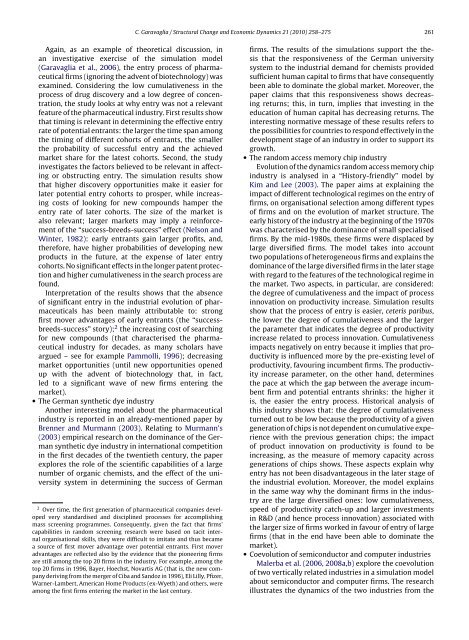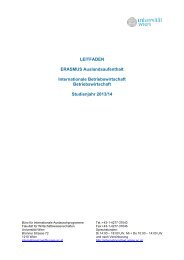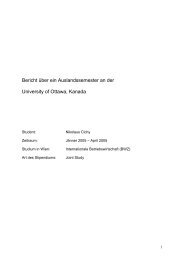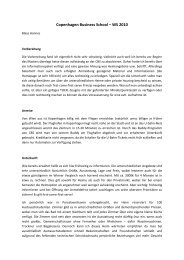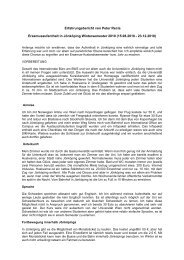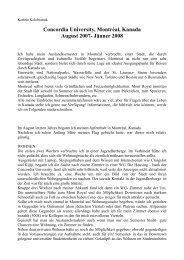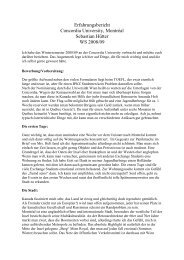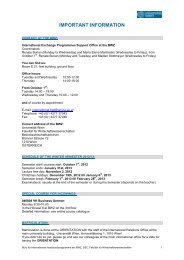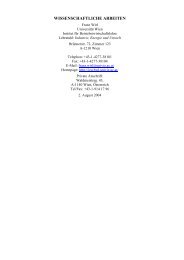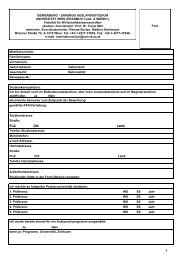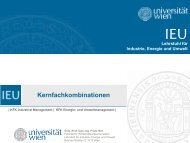Modelling industrial dynamics with "History-friendly" simulations
Modelling industrial dynamics with "History-friendly" simulations
Modelling industrial dynamics with "History-friendly" simulations
Create successful ePaper yourself
Turn your PDF publications into a flip-book with our unique Google optimized e-Paper software.
Again, as an example of theoretical discussion, in<br />
an investigative exercise of the simulation model<br />
(Garavaglia et al., 2006), the entry process of pharmaceutical<br />
firms (ignoring the advent of biotechnology) was<br />
examined. Considering the low cumulativeness in the<br />
process of drug discovery and a low degree of concentration,<br />
the study looks at why entry was not a relevant<br />
feature of the pharmaceutical industry. First results show<br />
that timing is relevant in determining the effective entry<br />
rate of potential entrants: the larger the time span among<br />
the timing of different cohorts of entrants, the smaller<br />
the probability of successful entry and the achieved<br />
market share for the latest cohorts. Second, the study<br />
investigates the factors believed to be relevant in affecting<br />
or obstructing entry. The simulation results show<br />
that higher discovery opportunities make it easier for<br />
later potential entry cohorts to prosper, while increasing<br />
costs of looking for new compounds hamper the<br />
entry rate of later cohorts. The size of the market is<br />
also relevant; larger markets may imply a reinforcement<br />
of the “success-breeds-success” effect (Nelson and<br />
Winter, 1982): early entrants gain larger profits, and,<br />
therefore, have higher probabilities of developing new<br />
products in the future, at the expense of later entry<br />
cohorts. No significant effects in the longer patent protection<br />
and higher cumulativeness in the search process are<br />
found.<br />
Interpretation of the results shows that the absence<br />
of significant entry in the <strong>industrial</strong> evolution of pharmaceuticals<br />
has been mainly attributable to: strong<br />
first mover advantages of early entrants (the “successbreeds-success”<br />
story); 2 the increasing cost of searching<br />
for new compounds (that characterised the pharmaceutical<br />
industry for decades, as many scholars have<br />
argued – see for example Pammolli, 1996); decreasing<br />
market opportunities (until new opportunities opened<br />
up <strong>with</strong> the advent of biotechnology that, in fact,<br />
led to a significant wave of new firms entering the<br />
market).<br />
• The German synthetic dye industry<br />
Another interesting model about the pharmaceutical<br />
industry is reported in an already-mentioned paper by<br />
Brenner and Murmann (2003). Relating to Murmann’s<br />
(2003) empirical research on the dominance of the German<br />
synthetic dye industry in international competition<br />
in the first decades of the twentieth century, the paper<br />
explores the role of the scientific capabilities of a large<br />
number of organic chemists, and the effect of the university<br />
system in determining the success of German<br />
2 Over time, the first generation of pharmaceutical companies developed<br />
very standardised and disciplined processes for accomplishing<br />
mass screening programmes. Consequently, given the fact that firms’<br />
capabilities in random screening research were based on tacit internal<br />
organisational skills, they were difficult to imitate and thus became<br />
a source of first mover advantage over potential entrants. First mover<br />
advantages are reflected also by the evidence that the pioneering firms<br />
are still among the top 20 firms in the industry. For example, among the<br />
top 20 firms in 1996, Bayer, Hoechst, Novartis AG (that is, the new company<br />
deriving from the merger of Ciba and Sandoz in 1996), Eli Lilly, Pfizer,<br />
Warner-Lambert, American Home Products (ex-Wyeth) and others, were<br />
among the first firms entering the market in the last century.<br />
C. Garavaglia / Structural Change and Economic Dynamics 21 (2010) 258–275 261<br />
firms. The results of the <strong>simulations</strong> support the thesis<br />
that the responsiveness of the German university<br />
system to the <strong>industrial</strong> demand for chemists provided<br />
sufficient human capital to firms that have consequently<br />
been able to dominate the global market. Moreover, the<br />
paper claims that this responsiveness shows decreasing<br />
returns; this, in turn, implies that investing in the<br />
education of human capital has decreasing returns. The<br />
interesting normative message of these results refers to<br />
the possibilities for countries to respond effectively in the<br />
development stage of an industry in order to support its<br />
growth.<br />
• The random access memory chip industry<br />
Evolution of the <strong>dynamics</strong> random access memory chip<br />
industry is analysed in a “<strong>History</strong>-friendly” model by<br />
Kim and Lee (2003). The paper aims at explaining the<br />
impact of different technological regimes on the entry of<br />
firms, on organisational selection among different types<br />
of firms and on the evolution of market structure. The<br />
early history of the industry at the beginning of the 1970s<br />
was characterised by the dominance of small specialised<br />
firms. By the mid-1980s, these firms were displaced by<br />
large diversified firms. The model takes into account<br />
two populations of heterogeneous firms and explains the<br />
dominance of the large diversified firms in the later stage<br />
<strong>with</strong> regard to the features of the technological regime in<br />
the market. Two aspects, in particular, are considered:<br />
the degree of cumulativeness and the impact of process<br />
innovation on productivity increase. Simulation results<br />
show that the process of entry is easier, ceteris paribus,<br />
the lower the degree of cumulativeness and the larger<br />
the parameter that indicates the degree of productivity<br />
increase related to process innovation. Cumulativeness<br />
impacts negatively on entry because it implies that productivity<br />
is influenced more by the pre-existing level of<br />
productivity, favouring incumbent firms. The productivity<br />
increase parameter, on the other hand, determines<br />
the pace at which the gap between the average incumbent<br />
firm and potential entrants shrinks: the higher it<br />
is, the easier the entry process. Historical analysis of<br />
this industry shows that: the degree of cumulativeness<br />
turned out to be low because the productivity of a given<br />
generation of chips is not dependent on cumulative experience<br />
<strong>with</strong> the previous generation chips; the impact<br />
of product innovation on productivity is found to be<br />
increasing, as the measure of memory capacity across<br />
generations of chips shows. These aspects explain why<br />
entry has not been disadvantageous in the later stage of<br />
the <strong>industrial</strong> evolution. Moreover, the model explains<br />
in the same way why the dominant firms in the industry<br />
are the large diversified ones: low cumulativeness,<br />
speed of productivity catch-up and larger investments<br />
in R&D (and hence process innovation) associated <strong>with</strong><br />
the larger size of firms worked in favour of entry of large<br />
firms (that in the end have been able to dominate the<br />
market).<br />
• Coevolution of semiconductor and computer industries<br />
Malerba et al. (2006, 2008a,b) explore the coevolution<br />
of two vertically related industries in a simulation model<br />
about semiconductor and computer firms. The research<br />
illustrates the <strong>dynamics</strong> of the two industries from the


